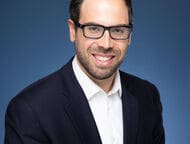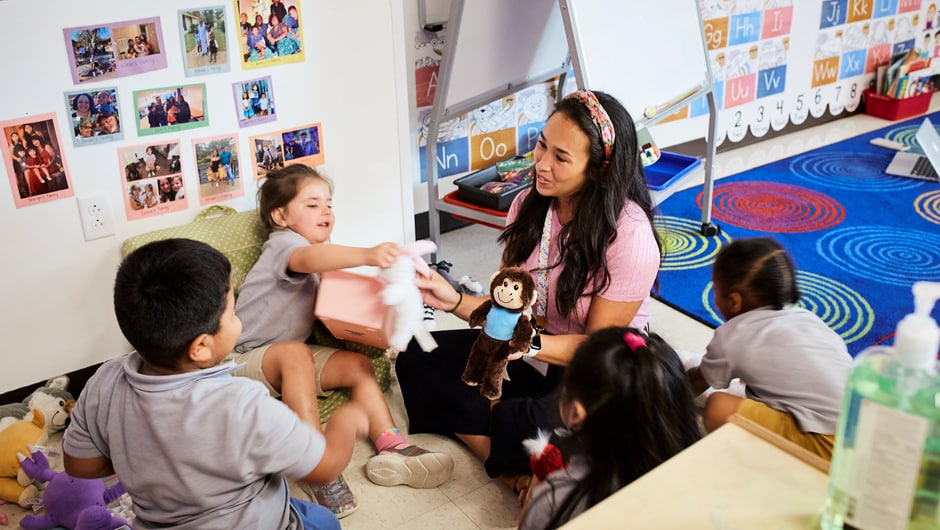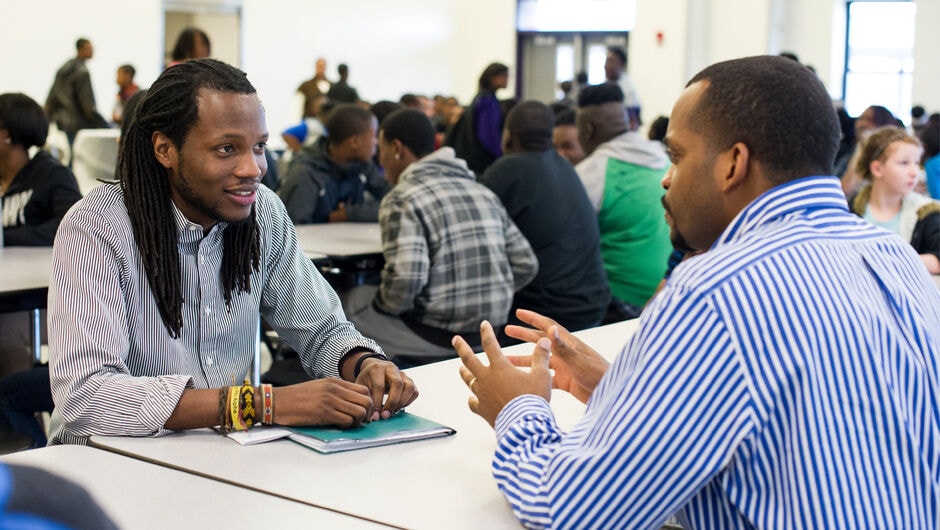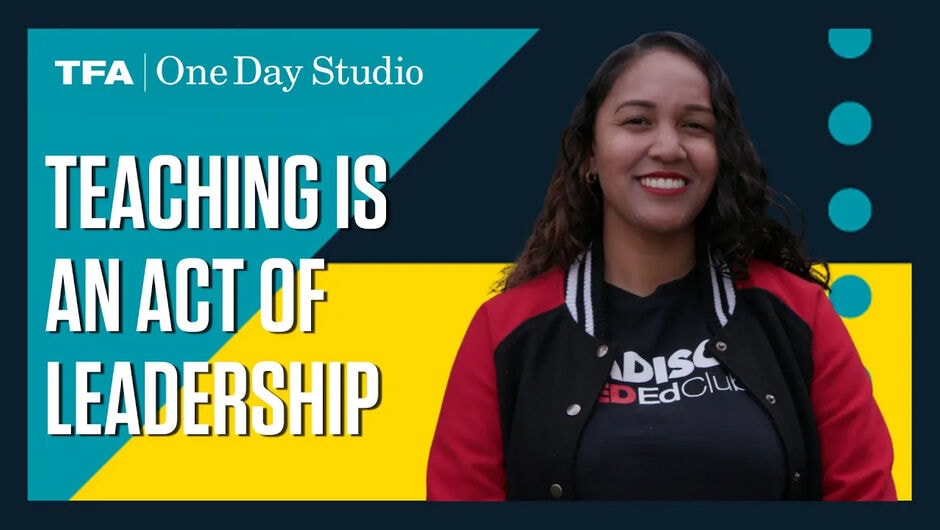
Seeking to Change the Realities of ‘Paradise’
A corps member who teaches in her home state of Hawai’i knows--from personal experience--the challenges she’s facing in confronting the unlived dreams and untapped potential of students in local communities.
I marched on Capitol Hill in March 2015 alongside hundreds of diverse students from across the nation. In unison, we chanted our demands for college accessibility and affordability. It was from that moment, -with the grand marble of the our country’s historical landmarks as a backdrop to our flimsy, cardboard "Fund the Future" signs, that my passion for improving the education system became my mission.
In truth, the march I made that day began long before my first trip to the East coast--4,836 miles away, in my beloved Hawai`i. While growing up, home was the shade of Nu`uanu Park’s sprawling live oak trees; the rhythmic current and blue hues of waves at Waimea Bay; bon dances and lo`i kalos, Pidgin English and the Aloha Spirit. Considering the uniqueness of these islands, it is no surprise that Hawai`i is often referred to as paradise, a desirable destination. However, as I grew older, home came to be defined instead by concrete skylines, graffitied classrooms, and unlived dreams. What the image of paradise had failed to include was reality, and I spent years wondering, How can this change?
My question of change ultimately led me to the work of Teach For America, an organization that shared my vision of a more equitable future. I began teaching on the Leeward Coast of O’ahu in 2017, no more than 30 miles from my own hometown. TFA had provided a pathway for me to enter the fight for education equity in Hawai`i, and my love for home resonated within me far more than the uncertainties ahead. I moved to a town with just over 10,000 people, joining a community bound together by blood and rooted in tradition and culture, the embodiment of the Aloha Spirit.
The relationships I built with my students became my driving force, both as an educator and human being. I fell in love with their pride, resilience, and incredible heart. However, within my first month teaching 10th grade English Language Arts, we encountered obstacles that were difficult to articulate, let alone begin solving. Regardless of the connections I built with my students, it became clear that many were resentful of having to learn a language, English, that frequently ‘corrected’ their own languages, Pidgin and ʻŌlelo Hawai`i, the Hawaiian language. Pidgin is a rich patchwork of languages--including Hawaiian, English, Japanese, Cantonese, and Portuguese--that reflects the unique diversity of Hawai`i’s plantation history. However, despite how ingrained Pidgin is in local identity, the language is met with intolerance under standardized curriculums. ʻŌlelo Hawai`i, a language once outlawed and nearly lost, faces similar obstacles. Students are encouraged to stifle their self-expression and native languages in order to reach mastery of standard English.
As the stacks of incomplete work on my desk grew larger each day, so did the presence of colonial legacies in my classroom. Kai questioned why he should try “in a school like Wai`anae,” and Lana spoke of becoming a gynecologist, but struggled significantly with the 10th-grade curriculum. I became unhealthily critical of everything from my lesson plans to the fonts in my PowerPoints. I was desperate to figure out how to make class enjoyable. It wasn’t until early October, when students took a district-wide standardized reading assessment, that I began to recognize reality.
I taught slightly more than 50 students, and I could see that our school system was failing them--nearly all were behind grade-level in reading by anywhere from two to seven grade-levels. I questioned how I could assume that students would engage in the curriculum if they could barely access the texts--I couldn’t. Each day, a new question entered my mind: How can I expect my students to learn about grammar, if some didn’t eat the night before? How can I criticize their attitudes about English when they were raised speaking Hawaiian or Hawai`i Creole English? I answered each question with the same response as the first: I couldn’t. Much like “paradise” excludes Hawai`i’s reality, the Leeward Coast’s beauty often distracts from the circumstances the communities face--severe poverty, high crime rates, and an education system that disproportionately fails its students.
The adversities that so many of my students--and all local students--encountered were not foreign to me. These were the familiar circumstances that shaped my childhood. I was raised by my mom, who has, for as long as I can remember, been my closest friend and invincible hero. However, for a single mother who is legally blind, surviving in Hawai`i with virtually no income was not easy. Each time I saw her counting coins in the middle of the night--quickly stacking quarters in an effort to keep up with Hawai`i’s increasing costs--I hated home a little more. She told me that education was my ticket to success, but I was a student in one of the lowest-performing public schools in a state at the bottom of national rankings--college was an abstract, distant dream that I didn’t think I was entitled to.
However, after years of trials and learning curves, I became the first college graduate in my family. Reaching a dream I once saw as unobtainable was only possible due to the help of a few incredible educators, three of whom were Teach For America corps members, who challenged the status quo, helped me to navigate complex systems, and who assured me that I was worthy of exploration.
Throughout the challenges of my first year in the classroom, I learned how to find strength in my story and use it to inform my role as an educator. Today, I find the answer to my question--How can things change?--in the stories of my students. My experiences, although starkly different from theirs, are remnants of the same obstacles that they face in paradise. I now focus on shifting education in Hawai`i’s classroom, and have transformed the ELA curriculum to celebrate the uniqueness of these islands through studying local poetry and novels. My classes challenge systems of power and oppression by exploring gentrification, economic disparities, the education gap, and multiculturalism. I have come to realize the importance of Hawai`i’s youth having access to their home and its history so that they can navigate the circumstances they face and, more importantly, be proud of where they are and where they are going.
The ancient Native Hawaiians recorded history through oral tradition, passing down knowledge through mo`olelo. It’s my hope that the stories Hawai`i’s students tell are stories of the incredible changes occurring here--of Kai, whose reading scores showed growth of up to four grade levels last year and who received his first ever ‘A’ in English; of Lana, who is now in Advanced Placement classes and plans to return to her community as a gynecologist.
It won’t be tomorrow, next week, or next month, but through the work of TFA Hawai`i, home will be Nu’uanu Park’s live oak trees, rhythmic currents, bon dances and lo’i kalos, Pidgin English and the Aloha spirit once again.
Sierra Callihan is a 2017 corps member.
Note: Students’ names have been changed to guard their privacy.
Sign up to receive articles like this in your inbox!
Thanks for signing up!
Content is loading...








